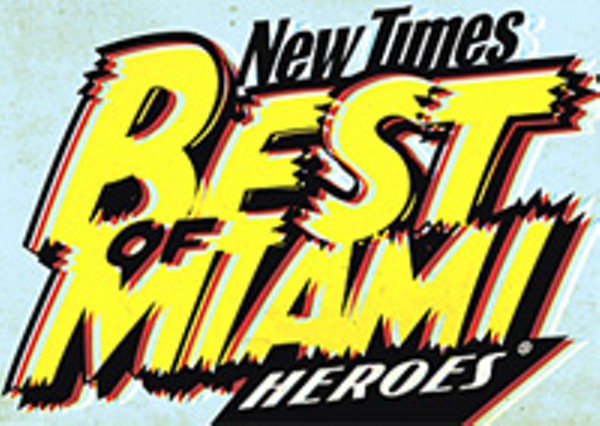Best New Dining Trend
Use of locally grown foods
The national buzzword among health-conscious diners used to be organic. It still is, to some extent, but as large corporations and supermarket chains increasingly dominate the organic food market, local has become the focus. It's the closest we, as urban dwellers, can come to eating fruits and vegetables grown in our back yards — and in a way, the Redland and farmlands of Homestead are our collective back yard. That Miami chefs have so enthusiastically embraced this trend is encouraging for numerous reasons. First, buying food directly from local family farms puts fresher, less processed products on our restaurant plates, and promotes sustainable and humane practices — while nonlocal food is often linked with heavy subsidies, poor animal welfare, lack of care for the environment, and poor working conditions. Second, we are blessed to be living so near to fertile farmlands that produce not only fine tomatoes, strawberries, and such, but an array of tropical fruits few other American cities can come close to — close being the operational word here. And finally, it's a sign of Miami's maturity into a relevant American food city that our chefs are so in sync with what is going on gastronomically elsewhere in the country. Even just a couple of years ago, this wasn't the case. Think globally. Buy locally. Can ya digç
Best Crabcake
Fifty Restaurant

The ramifications of a perfect crabcake were, admittedly, underestimated by all to a vast degree. Who could have foreseen that when chef Roly Cruz-Taura first unveiled his masterpiece at Fifty Restaurant, a progressive American newcomer to South Beach's Ocean Drive, it would be so creamy and juicy, and crammed with peeky toe crab sealed tightly in paper-thin, phyllolike, fried green plantain skin, for $12ç Who would prophesy that the entire population of the state of Maryland would swoon in envyç Or that the citizenry of Baltimore would take it especially hard, and contemplate a class action suicideç And it is still difficult to believe those rumors about the soft shell crabs threatening to boycott our waters — something about there not being enough room in this town for two sensationally unique crustaceansç Why, that just sounds crazy! Maybe it's the dab of avocado aioli atop the crabcake that puts everyone over the edge, or the smooth beurre blanc pooled below. One can only shudder to think of the chaos that will ensue if the perfect slice of pizza is ever created.
- 444 Ocean Dr., Miami Beach, 33139 Map
- 305-532-2441
Best Nonvegetarian Restaurant for Vegetarians
Lido at the Standard
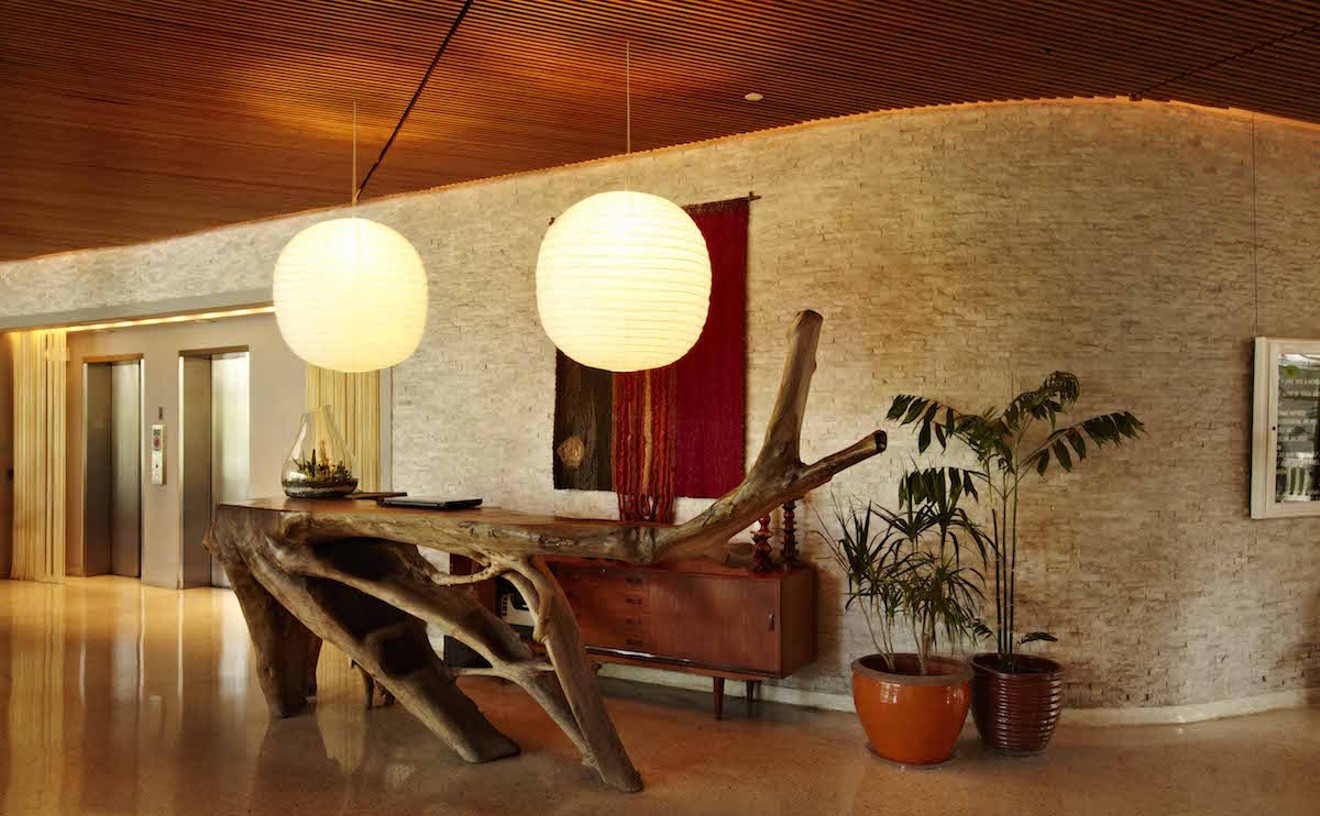
Adrian Gaut/The Standard Spa
An utter lack of decent vegetarian restaurants in our area dictates that noncarnivores must compromise and seek the next best thing: nonvegetarian dining establishments that respect and cater to those who don't eat meat. Problem is, there aren't too many of these, either, and even fewer that go beyond good intentions to actually create great meatless meals. Luckily we have Lido, located in the splendidly sun-kissed Standard Hotel and Spa. Superstar chef Eric Ripert was originally paid big bucks to draw up the menu here, but the results proved surprisingly small. Enter Lido's nonsuperstar chef Mark Zeitoni, who wisely trashed Ripert's ripoff and replaced it with a selection of light, luscious, spa-worthy creations. We assure you: No animals are harmed during the preparation of puréed pumpkin soup with nutmeg-flecked cauliflower flan ($7) or beet carpaccio with watercress and aged sherry vinaigrette ($11). And that's just for starters. For main course, diners can choose a threesome from a list of greens and grains, then mix and match them with any of a half-dozen sauces ($18). For instance, the Italian grain farro comes tossed with rosemary and parmesan, and can then be sprinkled with some truffle vinaigrette — or you may opt to splash it with sundried tomato and citrus sauce instead. Perhaps you'll select grilled haricots verts with lemon and sea salt to go along, and top it with a dab of yellow tomato béarnaise sauce, and finish the plate with quinoa and dried fruit — not sure what sauce you'd choose with that one, but to have to grapple with such a dilemma is a vegetarian's delight. So are salubrious salads and other lunch options served alfresco by the picturesque bay.
- 40 Island Ave., Miami Beach, 33139 Map
- 305-673-1717
- standardhotels.com/spa-miami-beach
Best Conch Fritters
Chef Creole
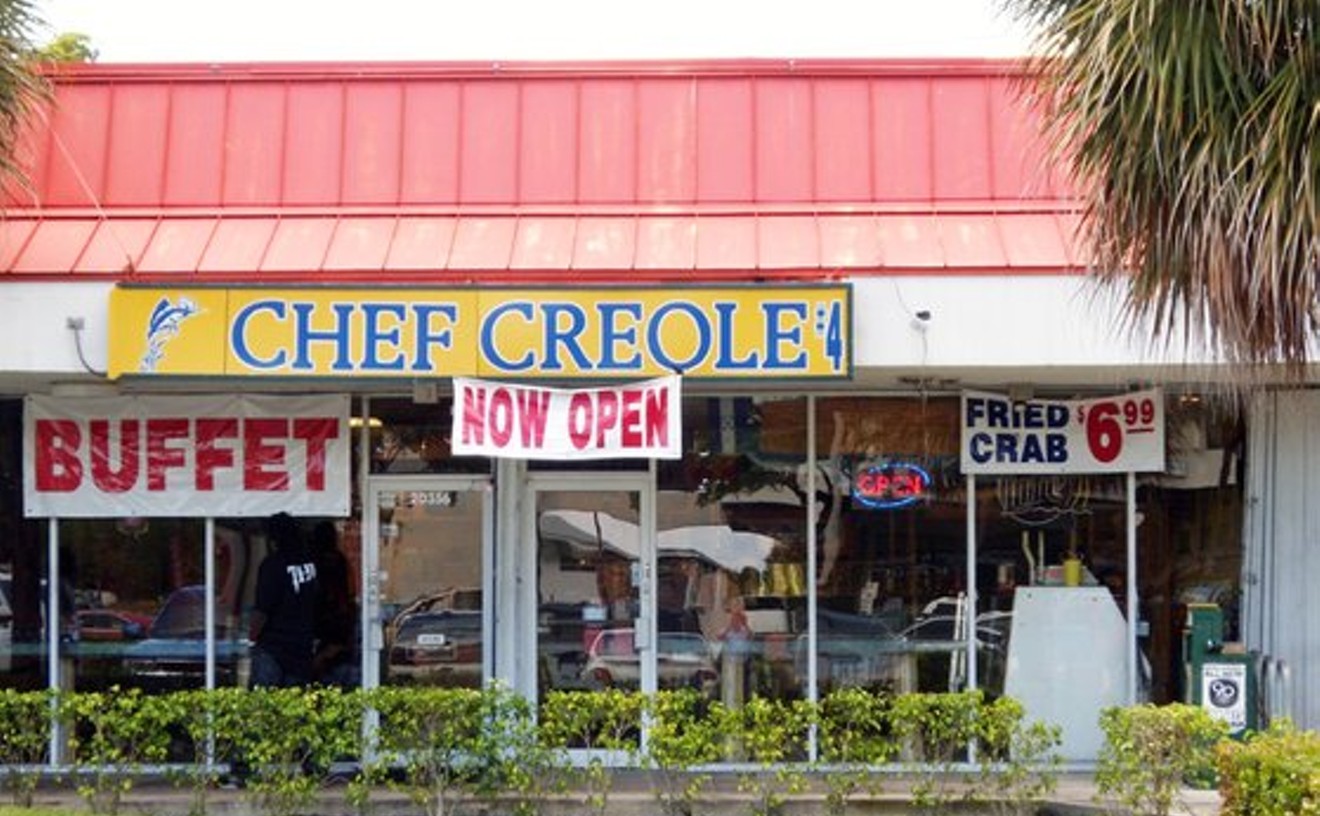
For some reason there's an unspoken rule among many Miami restaurant owners to include some variation of conch fritters on their menus. Most of them possess the requisite crunchy exterior and soft interior; but few compare to the fritters that fly out of Chef Creole. The size and shape of a smashed tennis ball, peppery and delicious, these deep-fried delicacies represent fritters at their finest. For $4 you get four, and though they're scrumptious and spicy on their own, for extra zing, try them with Chef Creole's homemade pikliz sauce — made of hot peppers, vinegar, cabbage, and other secret ingredients. A tip: Follow the fritters with an order of sweet plantains, and your tongue will thank you.
- 13105 W. Dixie Highway, North Miami, 33161 Map
- 305-893-4246
- www.chefcreole.com
Best Pizza Joint
Frankie's Pizza

No seats, no atmosphere, no booze. A menu shorter than Paris Hilton's attention span. A location only a strip mall developer could love. No amenities or accoutrements, no bells, whistles, or dancing bears. Only the best goddamn pizza on the planet. For 52 years, six days a week (Mondays off), Frankie's has been dishing up pies that are as elemental in their construction as they are satisfying. Nothing fancy here; you won't find smoked salmon pizzas or Thai chicken pizzas. Frankie's toppings are simple and offer few choices —tomato sauce, meats, veggies, cheese. They're all good enough. But what makes Frankie's pizzas the best on the goddamn planet is the crust—a little crunchy, a little chewy, remarkably light, with a faint char from the oven, and tasting of fresh-baked bread. Better still, a large deluxe tops out at $20. Who needs atmosphereç
- 9118 Bird Rd., Miami, 33165 Map
- 305-221-0221
- www.frankiespizzaonline.com
Best Barbecue
Uncle Tom's Barbecue
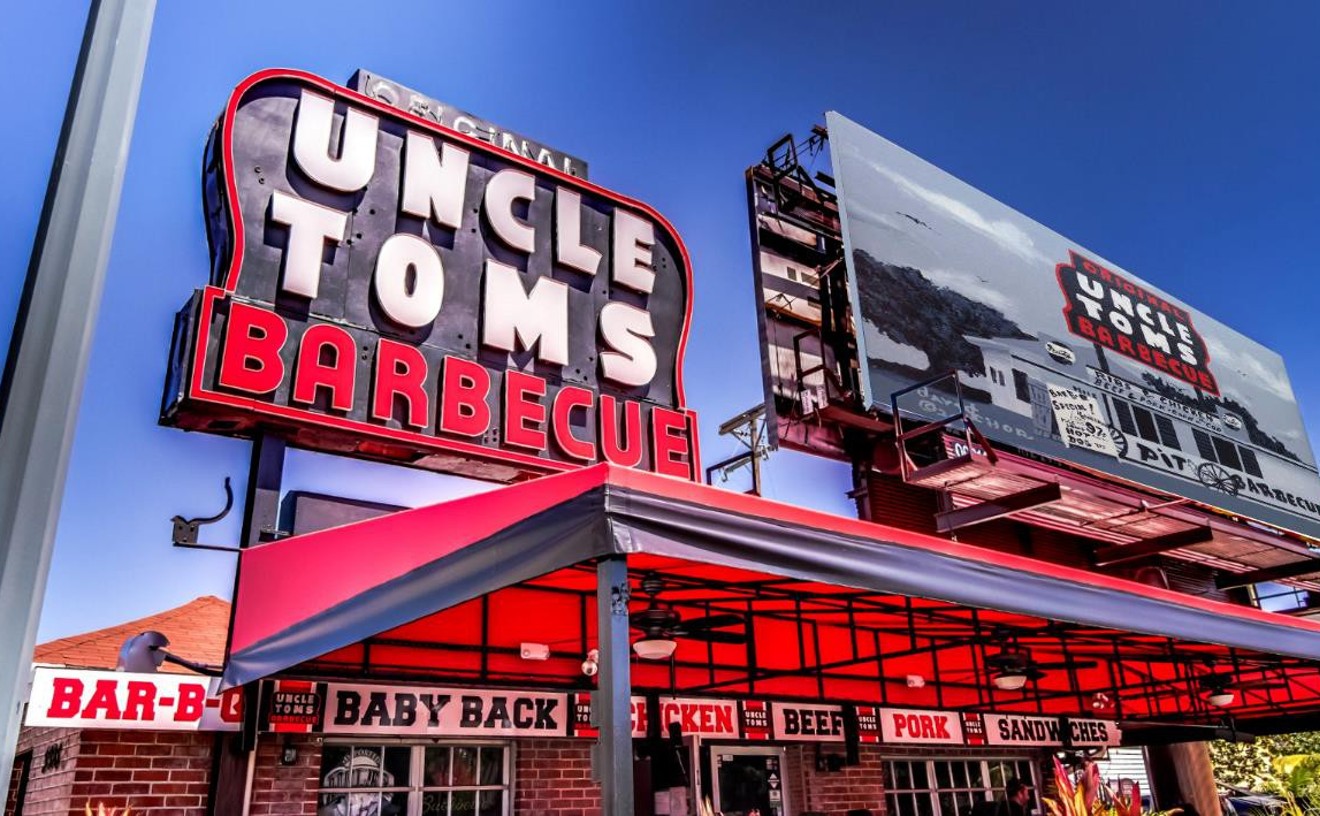
Courtesy of Uncle Tom's Barbecue
The barbecue at Uncle Tom's is so good that when you get home, expect Fido to jump on you for scraps of leftover ribs. Chances are there won't be much left for your four-legged companion. The place looks like it's stuck in time circa 1948, when it first opened. Walls are adorned with old photographs of Rita Hayworth, Mae West, and Liberace. Tom's is best known for its ribs, hot dogs, pork sandwiches, and corn on the cob, but a new sheriff is giving this place a fresh twist. The new Cuban owner, Alfredo Rosales, is bringing some additional flavor to the menu by adding Latin favorites such as palomilla steak, vaca frita, ropa vieja, tostones, and also seafood. Prices range from $5 to $14. Uncle Tom's still has entertainment, but no longer plays old movies. "We play a lot of music videos from the Seventies, Eighties, and Nineties," says William Marcano, manager. You know, sounds to lick your fingers to.
- 3988 SW Eighth St., Coral Gables, 33134 Map
- 305-445-0844
- originaluncletomsbbq.com/
Best Fish Sandwich
La Camaronera Fish Market
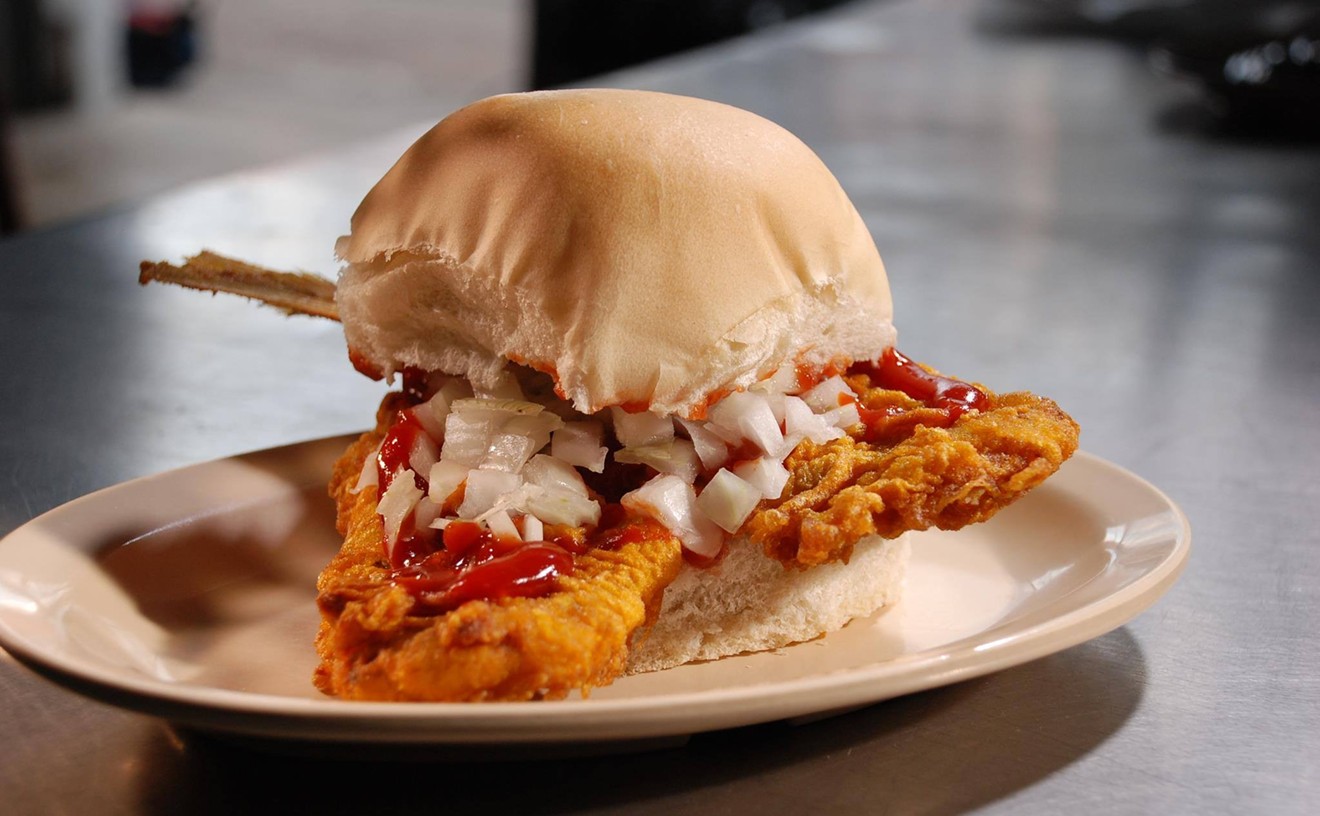
Courtesy of La Camaronera
It's standing room only come lunchtime at this long-time Flagler fish market, not only because locals flock here in abundant numbers, but also because there are no chairs. There is a counter to lean on, however, and all the makings of a real Cuban fish fry — including, most important, a steady supply of fresh seafood. Like the yellowtail snapper that gets breaded, fried, and plunked into a semolina bun. For $3. That's all there is to it. Sure you can find places to get pish-poshier fish sandwiches, maybe on focaccia with mango mayonnaise, but it won't taste as good as this one. La Camaronera also makes incredible fried shrimp (as the name would imply), but that's a "Best of" category for another year.
- 1952 W. Flagler St., Miami, 33135 Map
- 305-642-3322
- lacamaronera.com
Best Ceviche
El Nachito
Anyone who's been in South Florida long enough to know that the summer heat and humidity can suck the blood right out of your veins also knows that some of the best Mexican food around can be had in Homestead and nearby Florida City. El Nachito is a bit off the beaten Krome Avenue path, but it's worth the short journey to just past Homestead Air Force Base for reliable, well-prepared versions of traditional Mexican favorites, as well as first-rate ceviche. It's not fancy — a precise dice of fresh-tasting tilapia, gently "cooked" in lime juice, tossed with thin-sliced mild white onion, tomatoes, and cilantro, and served on a bed of shredded lettuce — but is that much better for its very simplicity. Sometimes less really is more.
Best Seafood Restaurant
The Oceanaire Seafood Room

Oceanaire has it all. Some 300 seats set like a luxury cruise liner, all sleek curves and warm woods. A bustling service staff and buzzing clientele, a serious wine list, and patrons lined up at a glistening oyster bar bedecked with shellfish from both coasts. Fish are brought in from all over the world, as well as from local waters, and include species you don't see elsewhere: Carolina striped bass. Hawaiian wahoo. Arctic char. About fifteen fresh catches are featured each day, either grilled, broiled, sautéed, steamed, fried, or gussied up in Latin-Caribbean manner, like seafood stew a la Cubana, or spear-caught hogfish "a la Chorillana." Chef Sean Bernal formerly steered ship at Tambo Restaurant in South Beach, and brings his bright ceviches and tiraditos to Oceanaire as well. Steakhouse sides such as hash browns and creamed corn, and steakhouse desserts such as baked Alaska and a banana split round out the extensive, crowd-pleasing bill of fare. Prices sail high, with entrées between $20 and $35 for lunch and $25 to $60 for dinner, but dinner includes warm boules of sourdough bread with softened butter, and a crudité tray perked with pickled herring. Finally: a classic American seafood house in Miami. Readers' Choice: Joe's Stone Crab
- 900 S. Miami Ave., Miami, 33130 Map
- 305-372-8862
- www.theoceanaire.com
Best Baklava
Almazar

This Greek/Middle Eastern newcomer draws FIU students from across the street for solid shawarma and falafel, but the star is the baklava. Flecked with pistachio or walnuts, for a mere buck and a quarter, the flaky delicacy is a godsend in Greek-poor Miami. Have yours with a cup of super-aromatic espresso and, perhaps, an academic conversation with a stranger.
- 1665 SW 107th Ave., Miami, 33165 Map
- 305-225-1127
- www.almazarrestaurant.com


